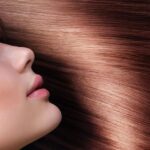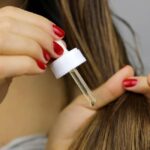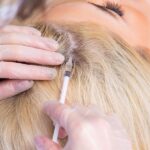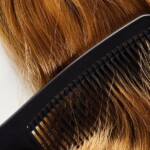Thin hair is a problem faced by many women and men, regardless of age. Fortunately, thanks to advanced care techniques and the right cosmetics, such hair can gain volume and look fresh and full. Below we present the most important tips that will help you achieve this effect.
What are the characteristics of very thin hair?
Very thin hair is distinguished by the fact that each individual hair has a smaller diameter than thick hair. This makes it more delicate and prone to damage. Due to this diameter, the hairstyle may appear less dense and flatter. Thin hair lacks volume, which in turn is a problem during styling. In addition, it is soft and silky, making it appear slippery and harder to maintain in a given shape.
Additionally, because thin hair has fewer cuticle layers, sebum can more easily coat the entire surface of the hair, causing it to look greasy more quickly. It is also more prone to mechanical damage, such as breakage, split ends, or heat damage.
How do sparse hair and thin hair differ?
Thin hair is usually soft and silky, which makes it more slippery and harder to style. The smaller diameter of each individual hair and fewer cuticle layers are what distinguish thin hair. Sparse hair, on the other hand, refers to having fewer hair follicles on the scalp. This means fewer hairs grow on a given area of the scalp. Such hair can have a normal diameter, but because of the smaller number, the hairstyle looks less dense. With sparse hair, the scalp can also be more visible, especially when parting or styling. Unfortunately, these two problems often occur together, and patients notice they have sparse and thin hair at the same time.
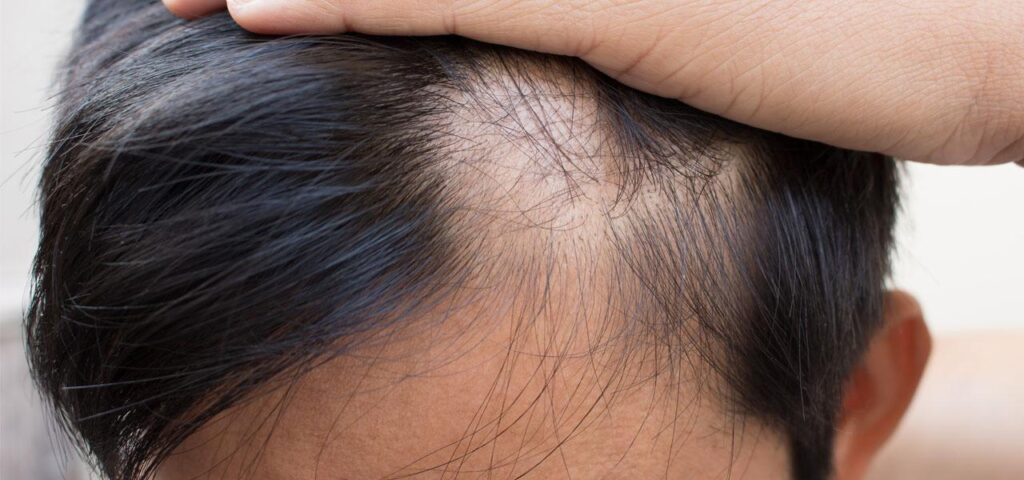
10 tips for taking care of thin hair
- Use the right shampoos and conditioners
Many people report to specialists saying, “I have very thin hair.” The first question they hear concerns the type of care products they use. Choosing the right shampoo and conditioner for thin hair is crucial to provide proper care without weighing it down. Volumizing shampoos are recommended, as they lift the hair at the roots while gently cleansing it. Look for shampoos with salicylic acid, which helps cleanse the scalp. Sulfate-free shampoos are lightweight and deeply moisturize the hair structure. Strengthening shampoos that also add elasticity are also a good choice. Biotin and collagen can thicken thin strands. When choosing a conditioner, look for a lightweight formula that adds volume and thickness without weighing hair down. Products that strengthen the hair structure, prevent breakage, and add fullness are recommended.
Therefore, look for products containing proteins, collagen, biotin, keratin, and other strengthening ingredients. Sulfate-free products are gentler on the hair and scalp, which is beneficial for thin hair. Silicones, on the other hand, can weigh thin hair down.
- Gentle washing
Thin, static-prone hair requires proper washing to maintain health and add volume. Start by gently combing the hair to remove tangles. This makes washing easier and reduces breakage. Wash hair with lukewarm water, as hot water can weaken already thin hair and dry out the scalp. Apply a small amount of shampoo to your hands and distribute it evenly. Avoid using too much to prevent weighing the hair down.
Gently massage the scalp with fingertips to cleanse it of sebum and impurities. Focus on washing the scalp, where most oil and dirt accumulate. The shampoo running down the hair length is enough to cleanse it. The final step is to rinse thoroughly with lukewarm water to remove all shampoo residue, which can weigh the hair down and make it look greasy.
- Regular trimming
In particular, long thin hair requires regular trimming to keep it healthy and prevent split ends. It is recommended to trim every 6 weeks. Thin hair is more prone to breakage and split ends. Regular trimming prevents further damage and keeps hair looking healthy. It also helps maintain the hairstyle’s shape and adds volume, which is especially important for thin hair.
- Avoid heat styling
Heat styling carries a risk of hair damage. Thin hair has a smaller diameter and fewer protective layers, making it more vulnerable to thermal damage. High temperatures can easily dry out such hair, leading to breakage and split ends.
- Proper blow-drying
Blow-drying thin hair requires delicacy and the right technique to add volume. Use the lowest possible temperature or a cool air setting. Hot temperatures can damage thin hair. Using a diffuser helps disperse airflow, preventing concentrated heat in one spot and reducing the risk of damage. To add volume, blow-dry with your head upside down.
- Avoid excessive pulling
Excessive pulling of thin hair leads to problems such as breakage and split ends. Constant tension on the hair, especially at the roots, can weaken follicles, causing hair loss and reduced density. Thin hair becomes more fragile when pulled.
- Use lightweight styling products
Opt for lightweight mousses, sprays, and gels that add volume without weighing hair down. Avoid heavy pomades and waxes. Lightweight products help hair maintain its natural volume and movement. Heavy ones, in contrast, cause faster greasiness.
- A nutrient-rich diet
Diet plays a significant role in hair health. Keratin, the main structural protein of hair, is made of amino acids. Protein helps build strong, healthy hair. Sources of protein include meats, fish, and nuts. Iron supports proper hair growth and prevents loss. That’s why people with thin hair should eat red meat, beans, or pumpkin seeds.
Omega-3 and fatty acids support healthy scalp oils, helping to keep hair and skin hydrated. Sources include fatty fish, walnuts, and flaxseed. Zinc, found in seafood, seeds, and whole grains, supports healthy hair growth and maintains structure.
- Proper scalp care
A healthy scalp is key to maintaining hair in good condition. Regular cleansing and gentle massage can stimulate blood circulation. As a result, the hairstyle looks better, and frizzy thin hair appears thicker and fuller.
- Avoid over-washing
Washing hair too often can strip away natural scalp oils, making hair look even thinner.
Read more: How often should you wash your hair? Hair washing tips
At OT.CO Clinic, we know that thin hair requires special care. We also remember that each person benefits from different products and care strategies. That’s why we recommend testing various techniques to find the ones that work best for your hair type. Both shoulder-length thin hair and longer hair can be very challenging for their owners if not cared for properly.



